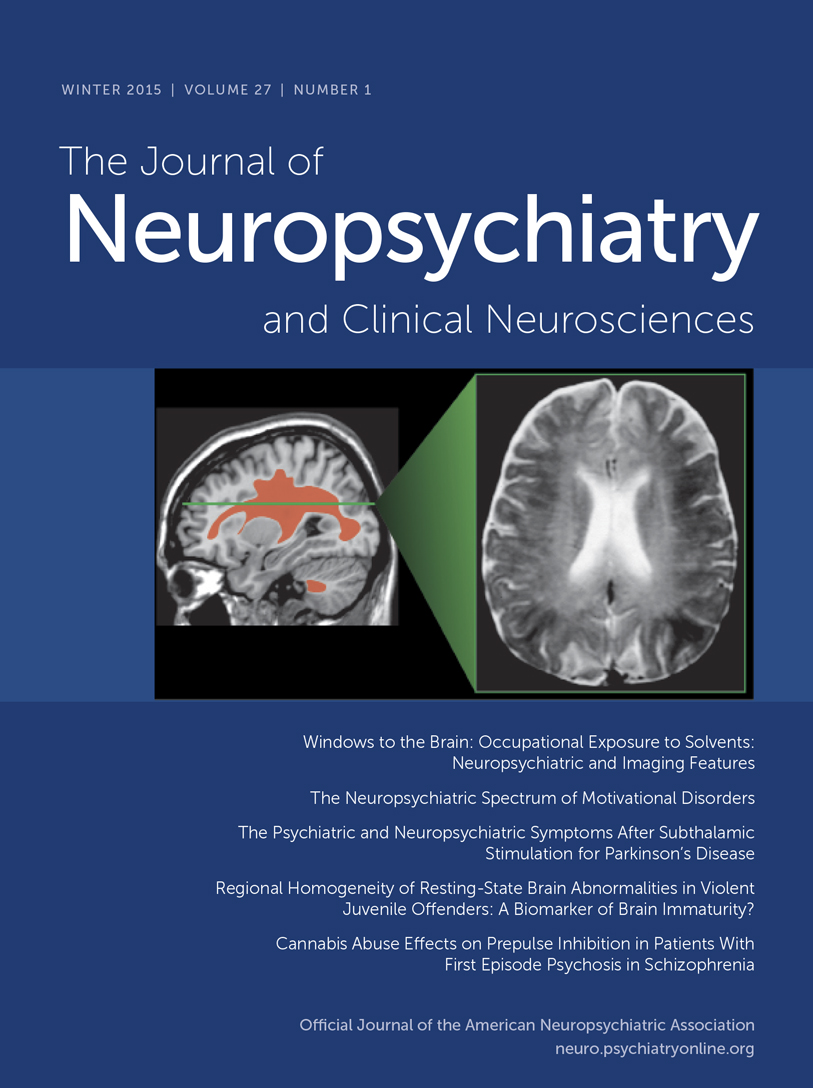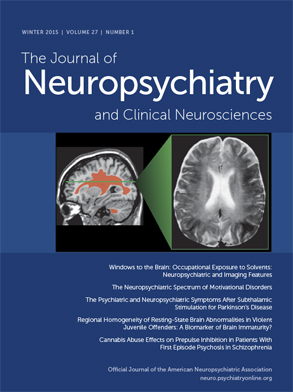Auditory hallucinations primarily of musical content [i.e., musical hallucinations (MH)] in the absence of other psychiatric symptoms are uncommon and lie at the interface between otology, neurology, and psychiatry. Despite its presence in the scientific literature for more than 150 years, very little systematic evidence is available.
Our article highlights three cases of hearing-impaired female patients who presented to the psychiatric service complaining of hearing familiar complex melodies in the absence of an external stimulus. Presentation of these cases was approved by the National Healthcare Group Domain Specific Review Board.
Case Descriptions
Case 1
“Ms. X” is an 81-year-old widowed Chinese woman. She was treated with radiotherapy for nasopharyngeal carcinoma two decades ago and was in remission. Ms. X developed a depressive episode 2 years ago and has been maintained on venlafaxine 75 mg/day with complete remission. She complained of hearing music for 2 months, which was louder over the left ear on a background of gradually progressive bilateral hearing loss for several years. The music comprised tunes and lyrics of familiar songs from the 1980s, usually louder in noisy environments, and she was not able to control it. The symptoms did not affect her functioning; she retained full insight and remained euthymic throughout her follow-up.
On mental state examination, Ms. X was a well-groomed, elderly Chinese woman who remained engaged throughout the assessment. She was euthymic and had no other perceptual abnormalities or delusional beliefs. She scored 29/30 on the Mini Mental State Examination. Basic blood investigations and MRI scans of the internal auditory meatus were unremarkable. Endoscopic examination demonstrated postradiotherapy changes. An MRI scan of the brain showed age-related microvascular ischemic changes. Audiometry revealed bilateral symmetrical moderate-severe sensorineural hearing loss (hearing threshold at the 40- to 50-dB range, no air-bone gap).
Hearing aids did not reduce the intensity of the music. Venlafaxine was gradually tapered off with no recurrence in mood symptoms or changes in MH. Ms. X did not wish to take additional psychotropics.
Case 2
“Ms. Y” is an 80-year-old widowed Chinese woman with no formal education. She complained of progressive bilateral hearing loss for the last 10 years and was diagnosed with age-related hearing loss.
She complained of hearing music for the last 5 years (approximately 5 years after the onset of hearing impairment) in the absence of an external stimulus. She described it as tunes and lyrics of Cantonese opera music, which she was familiar with in her childhood. It was repetitive and occurred in external space throughout the day “as if coming from a radio,” with no aggravating or relieving factors. Although she enjoyed the music on most days, Ms. Y described occasional frustration with her inability to control it. She retained full insight into the nature of her symptoms, and it did not affect her functioning. Although there were infrequent lapses in short-term memory, no other aspects of cognition were affected.
On mental state examination, Ms. Y was a neat, elderly Chinese woman who was euthymic and displayed an appropriate affect. She had auditory hallucinations of musical content and no other perceptual abnormalities. Ms. Y declined a cognitive assessment.
Audiometry revealed moderate-severe sensorineural hearing loss with an auditory threshold of 55 dB in both ears (done after the onset of hearing loss but before the onset of MH). Repeat audiometry on two other occasions almost 6 years apart showed a stable pattern of hearing loss. Ms. Y declined further investigations and psychotropics. On follow-up, there were no changes in the symptoms, and she continued to decline a hearing aid, citing discomfort.
Case 3
“Ms. Z” is a 53-year-old Chinese woman who presented with left-sided hearing loss for 1 week, which was preceded by a fever. She complained of hearing familiar tunes in her left ear since the onset of hearing loss. The tunes were familiar to her (e.g., the national anthem, Christmas carols, and pop songs). She would hear them for variable durations; on occasion throughout the day. She retained full insight into the nature of her symptoms.
Mental state examination revealed a middle-aged Chinese woman who was well groomed, engaging, and euthymic. Apart from musical hallucinations, there were no other psychotic symptoms elicited. Initial examination revealed a right middle ear clear effusion. Endoscopic examination of the upper airway was normal. Audiometry showed bilateral mixed hearing loss, which was worse in the left ear (auditory threshold 50 dB in right ear and 70 dB in left ear) with an air-bone gap of 20–30 dB in the right ear and 10–20 dB in the left ear. She was given a course of oral prednisolone but continued to experience progressive hearing loss over the subsequent 5 months. Repeat audiometry showed bilateral conductive hearing loss, which was greater on the left. A CT scan of the middle ear was normal.
A trial of clonazepam and a temporary bone-adjusted hearing aid did not help with her symptoms.
Discussion
Musical hallucinations on a background of hearing impairment has been described infrequently in the literature, largely comprising case reports and case series. Cole et al,
1 in a survey of 125 patients over the age of 65 with hearing impairment, found that approximately 2.5% experienced MH. More recently, Teunisse et al
2 documented a prevalence of 3.6% with significant associations between female sex and predominant left-sided hearing impairment. No association between age and severity of hearing impairment was found in this study. Interestingly, in Ms. X’s and Ms. Z’s cases, MH occurred louder in the ear with greater hearing impairment (both left sided).
Berrios et al
3 examined 46 cases (80% women; mean age, 60 years) and found that two-thirds were hearing impaired and three-quarters had no psychiatric illness. A more recent review of 132 cases of MH extracted from the literature after 1990
4 echoed these findings. They too found that, overall, there was a preponderance of older women in their sample, with those with central nervous system pathology being significantly younger. Hearing loss played a large part in the possible etiology, as 61% of the patients had a history of hearing loss or deafness. Similarly, this was seen in the three cases we report. Although generalizations should be made with caution, it appears that female gender, older age, and hearing impairment are possible associations, although the extent of the individual associations in terms of etiology is as yet unknown. In our case series, the auditory thresholds varied from 45 to 70 dB. Auditory threshold and its association with the development of MH has not been explored in the literature to date and would be an interesting future consideration.
Consistent with the reports in the current literature, all three of these patients complained of hearing complex, organized, repetitive, nonthreatening, vivid, and familiar music. Interestingly, the MH was familiar tunes to the three women, although they did not attach any specific emotional meaning to any of the songs or music they heard.
Several pathways have been proposed as mechanisms for etiology. Because of the reported association between hearing impairment and MH, it has been postulated that the cochlea is the origin of pathology. Griffiths
5 proposed that hearing loss results in a reduction in afferent auditory inputs. This then leads to a reduction in levels of inhibition from higher centers and a consequent relative overactivity in auditory association cortices. This, however, would mean that most hearing-impaired individuals would experience MH and vice versa, which is not always the case, suggesting that the interplay is more complex than what is currently understood.
Assessments of these patients are varied, and the focus would be determined by the specialty of the physician who is conducting the assessment. MH may not always be distressing, and most of those afflicted would retain insight. A thorough assessment and reassurance that affected individuals are not psychiatrically or medically unwell may be all that is needed as in the cases we described.
Reports on successful treatment have been limited to case reports over the years. Using a hearing aid has been shown to treat MH.
6 Antipsychotics,
7,8 anticholinesterase inhibitors,
9 anticonvulsants,
10–13 and antidepressants in the presence of a depressive disorder
14 have shown benefits; however, there is no general consensus on first-line options, dosage, and duration of treatment.
In our case series, two of the three cases described above did not benefit from hearing aids in terms of improvement of MH. It is noteworthy that the presence of MH was not affected by tailing off of venlafaxine for Ms. X, and Ms. Z did not benefit from a trial of clonazepam. In all three cases, the reassurance that there was no sinister physical or psychiatric illness was sufficient to improve distress.

